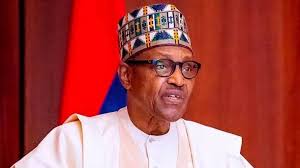Politics tamfitronics
The most recent budget, unveiled in July, included unusual special financial allocations for the southern state of Andhra Pradesh, of INR150 billion, (US$1.78 billion) led by Chandrababu Naidu and the northern state of Bihar, of INR590 billion, led by Nitish Kumar. The coalition’s stability depends on the support of these two state leaders, both of whom preside over financially precarious regions.
“It is difficult to comment on such allocations and their implications at this point,” Probal Biswas, associate director at research firm Crisil, tells PV Tech Premium. “However, considering the overall fiscal deficit target set by the government of India, increased allocations in any schemes could potentially impact allocations towards other schemes.”
In other words, future budgetary issues could feasibly lead to cuts in various incentives for PV.
The extra funding for Andhra Pradesh and Bihar comes at a time when many other states are grappling with financial difficulties. As a result, Biswas suggests that other states might also seek similar financial assistance, complicating the government’s ability to fund initiatives like the PM-Surya Ghar: Muft Bijli Yojana, which aims to subsidise rooftop solar installations for ten million households, or the Production Linked Incentive (PLI) programme supporting domestic PV module and battery storage manufacturing.
The government’s commitment to expanding renewable energy capacity, including bringing in energy storage as a service and developing a robust green hydrogen sector, reflects a steady policy direction for solar energy. However, the long-term effects of the coalition on solar initiatives remain uncertain, according to Biswas.
The coalition has maintained its support for the PLI, which will aid major domestic companies like Reliance, Adani, and JSW in entering the silicon refining sector, providing them with enough protection to compete with Chinese manufacturers, says Biswas.
However, external factors could influence policy. If prices for crude oil and natural gas—both of which India imports—remain stable, occasional financial aid to states like Andhra Pradesh and Bihar might be manageable. However, rising gas or commodity prices on the international market could strain India’s ability to maintain support schemes.
“In case oil prices go beyond US$100 per barrel and remain so for a longer period of time, there could be a potential impact on many kinds of subsidy or allocations,” Biswas adds.
The ten million household rooftop solar scheme also has significant implications for supporting local manufacturers.
Although the latest budget does not directly affect domestic PV manufacturers, they are looking for demand for their panels, notes Neshwin Rodrigues, an electricity policy analyst at Ember Climate. They should be “relatively content” with the official launch of the major rooftop scheme, which confirms a substantial allocation for PV additions. However, overcapacity might become an issue.
“India has a manufacturing capacity of more than 64GW of panels every year,” says Rodrigues. “Since they are more expensive than Chinese panels, it’s likely that most of the demand for these panels will be domestic. But in FY 2025, it’s likely that India will add 25GW, which implies that there could be some underutilised manufacturing capacity in India.”
The higher cost of Indian modules also makes it more challenging for them to compete internationally, although some exports to the US will continue.
Rooftop budget cut
The structure of the rooftop solar-focused programme PM-Surya Ghar: Muft Bijli Yojana, announced in February, remained unchanged in the guidelines from the original announcement with a subsidy of INR30,000/kW confirmed for systems with capacity up to 2kW and INR18,000 for any additional capacity up to 3kW.
However, the total capital outlay has been reduced. The guidelines released in June allocated INR750 billion to the scheme, intended to be dispersed over three years at INR250 billion per year. But the revised budget in July 2024 allocated only INR62.5 billion for the financial year 2024/25.
“This reduction could be due to several factors which may contribute to lower installation of rooftop systems under the scheme in the current fiscal year,” says Biswas. “Some of the factors could be a shortage of domestic modules with domestically manufactured cells, technical issues in the portal, implementation challenges, or potential delays in subsidy disbursements etc. All of this could have partially contributed to lower budgetary allocation towards the scheme under the current budget.”
The scheme may have been hastily launched before the elections, possibly adding a political dimension to the announcement, Biswas suggests. Additionally, rooftop installations in India often face challenges, as they need to be installed through state distribution companies (Discoms), which tend to have cumbersome approval processes. These operational difficulties could also have influenced the reduction in budget allocation.
The scheme not only subsidises each PV system installation but also the electricity tariff for the first 300 units, potentially impacting state finances, as Discoms will bear the cost, adds Biswas.
He also notes that it is historically common for Indian government-led programmes to extend well beyond their original timelines, so the rooftop scheme could easily continue beyond the planned three years.
Rural versus urban implications
Offering an alternative perspective, Rodrigues argues that the government may ultimately prioritise this programme as it targets rural India, where Modi’s party lost ground in this year’s elections. The scheme was also oversubscribed in its initial stages.
However, despite the programme’s touted benefits for rural India, Rodrigues remains sceptical about its effectiveness due to significant differences in demographics, finances, and awareness between rural and urban populations. He cites four reasons:
- Early adoption by high-paying consumers: Within the residential segment, early adopters of rooftop solar have typically been high-paying consumers, predominantly in urban areas. These consumers have the financial capability and motivation to invest in rooftop solar, unlike many rural and semi-urban households. Even among rural consumers, interest in the scheme is likely to be limited to the relatively affluent.
- Awareness gaps: Urban consumers are generally more aware of the benefits of rooftop solar installations. The lack of awareness and information dissemination in rural areas could limit participation in the scheme. The urban-rural split in registration among the 12.8 million applications could indicate this disparity.
- Rooftop ownership and suitability: In urban areas, rooftop ownership often involves complexities, particularly in multi-tenant buildings, where the decision-making process can be convoluted. In rural areas, while ownership might be more straightforward, the physical suitability of rooftops for solar installations could vary widely depending on the region, impacting the effectiveness of the scheme.
- Financing barriers: The scheme aims to fund 40-60% of the capital cost, but the remaining 60-40% still requires financing. Rural households, particularly those with lower income, might struggle to finance this portion, limiting their ability to benefit from the scheme. Although the provision of Renewable Energy Service Company (RESCO) models and easier financing options could mitigate some of these issues, the success of these solutions might be uneven across different demographics.
India’s rooftop solar market has experienced healthy growth in recent years, but it remains only 20-30% the size of the utility-scale market, according to Dhruv Tyagi, senior consultant at Crisil. The rooftop segment used to have 1.5-1.7GW of annual deployment, which increased to 2.8-2.9GW three years ago. This year, there is potential for more than 4GW of installations. However, the utility-scale segment saw around 10GW of deployment last year, with similar or higher figures expected this year.
The unbalanced ratio between the two PV segments persists because utility-scale projects continue to be attractive due to economies of scale, with the largest PV players focusing on large projects, Tyagi notes. Except for Tata, there is a lack of major players in the rooftop space. However, the government’s new rooftop scheme provides a framework to drive capacity additions.
Open Access boon in Andhra Pradesh
Andhra Pradesh has historically been a high performer for solar installations among Indian states, but it has been hampered over the last five years by a trend of reneging on power purchase agreement (PPA) prices. Despite the issue reaching the supreme court, which upheld the sanctity of PPA prices, the uncertainty led to a halt in renewable capacity additions in the state.
However, the extra funding for the state has a “flip side”, says Tyagi. The open access market in Andhra Pradesh has struggled with policy uncertainty and project developers have been denied approvals over the last three to four years. But with a BJP-led government now in power, Crisil expects significant improvements in the open access market as the state aligns with central government policies on this issue.
India added around 12.2GW of new solar capacity in the first half of the year, with its renewable energy deployment in H1 2024 surpassing that of the entire 2023 year, according to figures from JMK Research.




